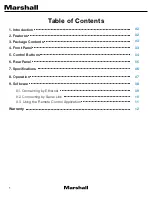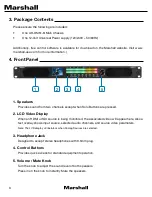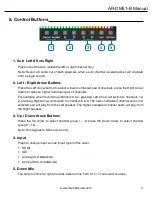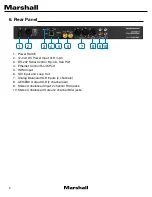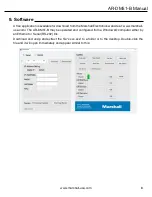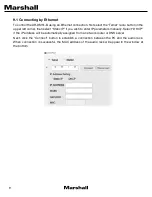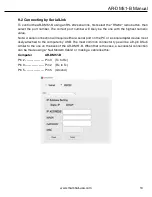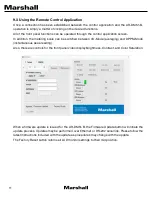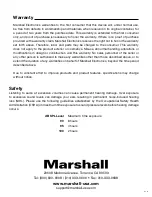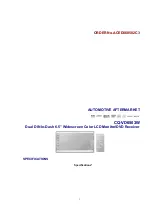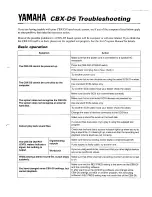
7
8. Operation
Controls on the AR-DM51-B are designed to be extremely straight-forward. To start, simply press
the Input button to select the desired source, then adjust the volume knob to the desired listening
level.
Metering Type
The default audio metering type is PPM (Peak Program Meter). The metering type can be switched
to VU (averaging) using the remote control software (available from the Marshall website at:
www.marshall-usa.com/)
Monitoring HDMI Sources
When HDMI is selected, video from that source will appear on the front panel LCD display along
with information about the video format and selected audio channels. This is a convenient feature
allowing quick confirmation that the desired source is being monitored. Channels 1 & 2 will appear
on the LED meters and be heard from the speakers. Up to 8 audio channels may be carried in an
HDMI program. These are often arranged as 5.1 or 7.1 surround. Use the Right or Left arrow buttons
to hear other channel pairs or press the Mix Down button to hear all of the channels as a stereo mix.
Monitoring SDI Sources
When SDI is selected, video from that source will appear on the front panel LCD display along with
information about the video format and selected audio channels. Channels 1 & 2 will appear on the
LED meters and be heard from the speakers. SDI can carry up to 16 channels, organized as two
groups of 8 channels each. Press the Right or Left arrow buttons to hear other channels in the first
group (channels 1 – 8).
Press the Up or Down arrows to select the second group (channels 9 – 16) then press Left or Right
to select channels in this group.
Monitoring Analog Sources
Connectors are provided for either broadcast level +4DBm balanced audio (XLR) or AV line level
-10dBm unbalanced (RCA) audio. Broadcast level tone at +4dBm will indicate at the arrow mark
on the meter bar, line level 10 at -10dBm will indicate at the same point when connected via the
RCA connectors.
In addition to metering and monitoring, analog sources are sampled and converted to AES digital
and will appear at the AES/EBU connector on the back panel. The AES connection is balanced
110-ohm type.
Note: If it is desired to connect to equipment that accepts AES digital audio on a 75-ohm BNC
connector, please use a 110-ohm to 75-ohm “balun” converter.


